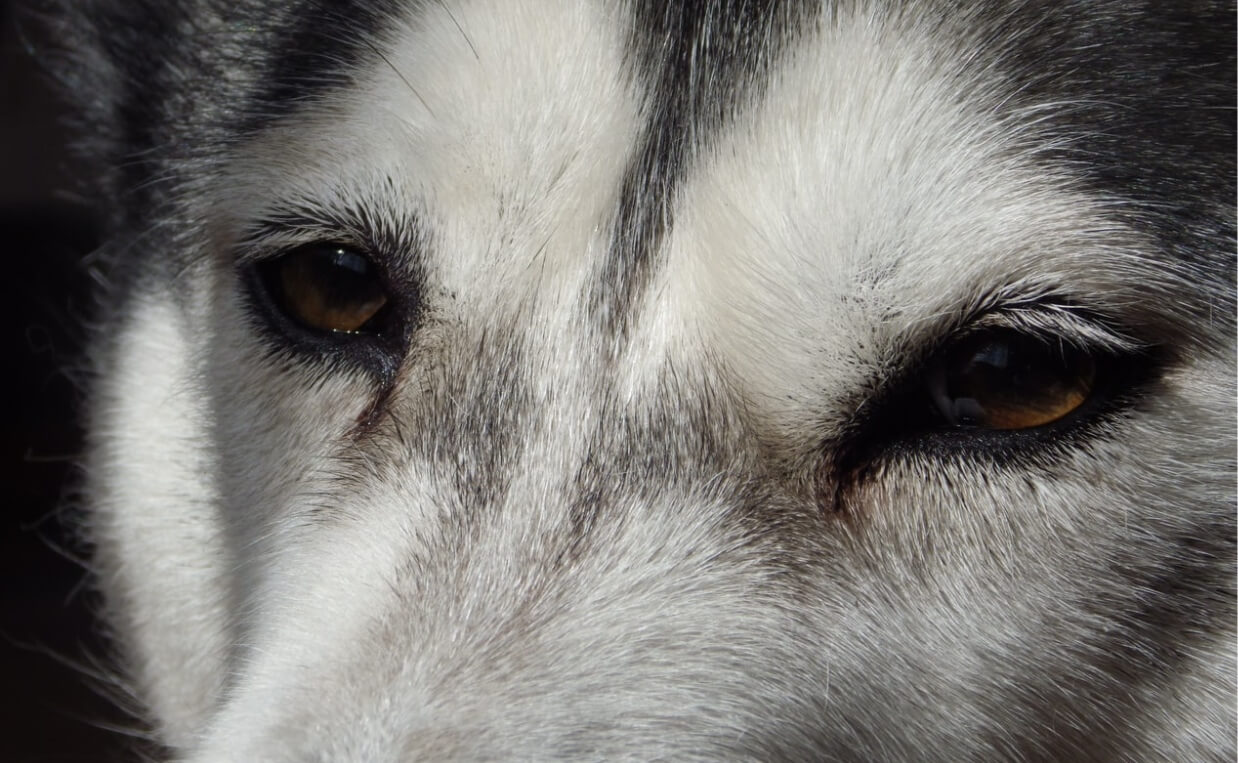
If you’re a dog parent, you may already have experienced eye issues in your dog. They’re not uncommon in our canine friends. It’s not just senior dogs who experience eye issues; a number of conditions can occur at all ages and across all breeds.
It’s never easy when our pups start having health problems but recognizing the signs of a problem early can help ensure the ailment doesn’t advance to something worse.
Here are nine of the most common eye issues to look for in dogs.
-
Pink eye
Most dog owners don’t know their dog can get pink eye. The medical term for pink eye is conjunctivitis. Similar to humans, symptoms of pink eye include:
- Red eyes
- Inflammation
- Gooey discharge
There are two causes of pink eye in dogs – a bacterial infection or an allergic reaction to something like pollen or cigarette smoke. In both instances, your dog needs to be seen by a veterinarian. If it is determined your dog has a bacterial infection, he or she will need a prescription from your vet for an antibiotic eye drop. If the cause is an allergic reaction, your dog will require a solution from the vet to flush irritants out of your dog’s eyes.
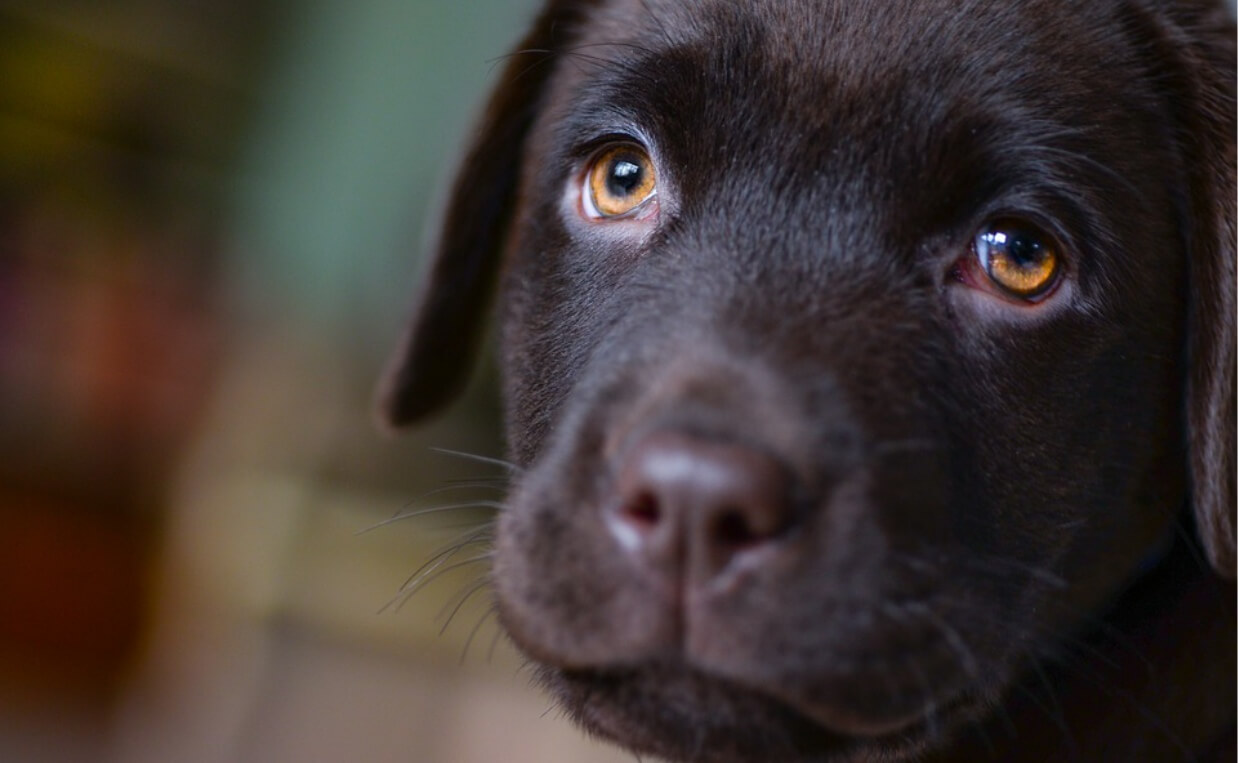
-
Corneal damage
Just like humans, dogs sometimes get something in their eye. Grass and dirt are common culprits. Damage to the cornea usually occurs when your dog scratches his or her eyes with his or her nail. Signs your dog has a damaged cornea includes:
- Eye redness
- Excessive eye tearing
- Pawing at the eye
If you suspect your dog has corneal damage, take your dog to the veterinarian as soon as possible. Your veterinarian will be able to evaluate the injury and help prevent an infection in the eye.
-
Dry eye
The medical term for dry eye is keratoconjunctivitis sicca. Dry eye occurs when your dog’s tear ducts aren’t producing enough lubrication. This makes it hard for your dog’s eyes to naturally eliminate the dust and dirt that commonly gets in a dog’s eyes. This causes irritation in the eye. If not properly treated, dry eye can lead to scratches on the cornea and even ulcers. Signs of dry eye include:
- Excessive blinking
- Eye redness
- Squinting
- Pawing at the eyes
Veterinarians usually prescribe artificial tear drops if dry eyes are diagnosed.
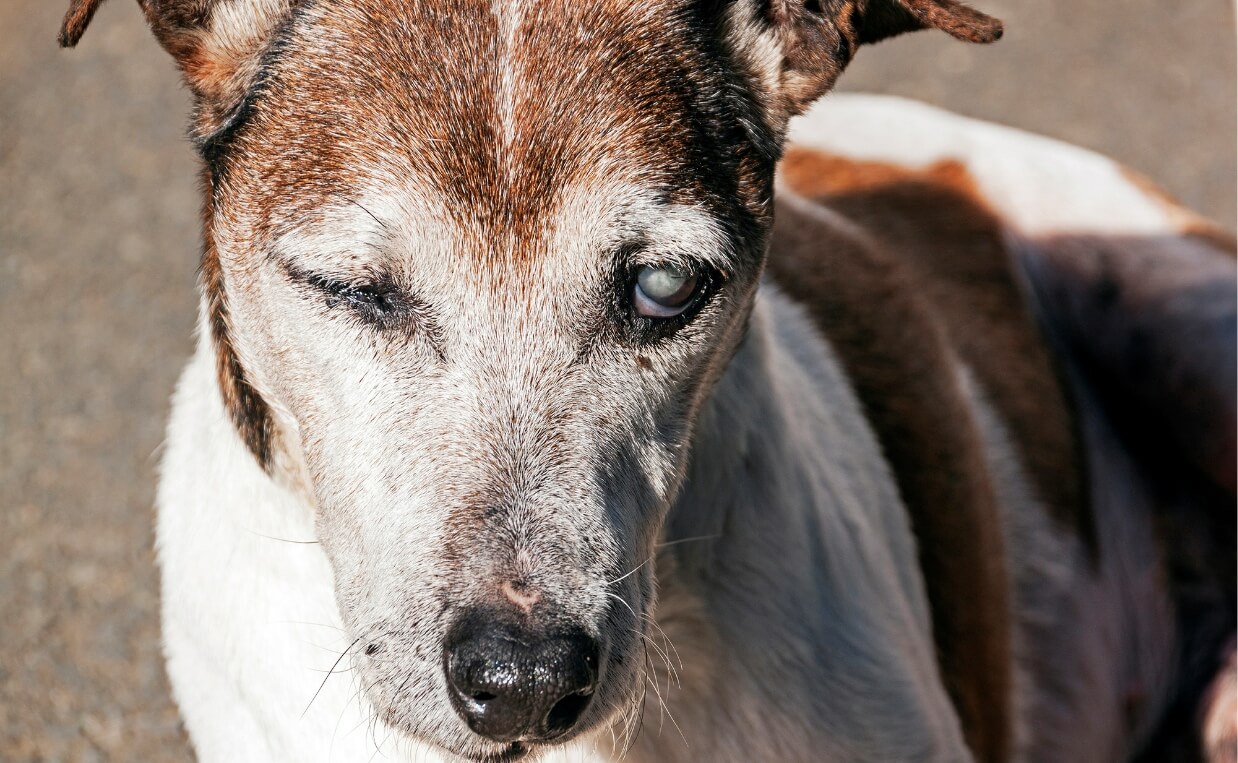
-
Eyelid mass
Sometimes a growth or lump will grow on your dog’s eyelid. If you notice a lump on your dog’s eyelid, he or she need to be seen by a veterinarian. There are several causes of eyelid masses, such as a cyst or benign tumor. However, sometimes the lump can be cancerous. Your veterinarian can determine the best course of treatment depending on the diagnosis.
-
Cataracts
Just like in humans, cataracts become a problem in many dogs as they grow older. Depending on the severity, cataracts can affect your dog’s eyesight and, if not treated, can cause blindness. They also can be a sign of an underlying illness, such as diabetes. Symptoms of cataracts include:
- Cloudy eyes
- Eye inflammation
- Irritation
- Adopting coping behaviors due to sight loss
Contact your veterinarian if you start to notice signs of cataracts in your dog’s eyes. Cataract surgery is available for dogs when their vision is severely compromised.

-
Cherry eye
Dogs have three eyelids. Two of these eyelids are visible but the third one normally hides from view beneath the inner corner of the eye. The third eyelid contains a tear producing gland. Some dogs have a congenital weakness of the ligament that holds the third eyelid in place. When the ligament fails, the eyelid pops out of where it usually is located and looks a little like a “cherry” stuck at the inner corner of the eye. Since this condition is usually genetic, most dogs with this condition will eventually get it in both eyes.
Veterinarians are able to complete a simple surgery to attach the gland back in a more normal position.
-
Glaucoma
Glaucoma occurs when the delicate balance of fluid within the eye is disrupted and pressure within the eye increases. Symptoms of glaucoma include:
- Pain
- Eye redness
- Increased tear production
- A visible third eyelid
- Corneal cloudiness
- Dilated pupils
- Obviously enlarged eye, in advanced cases
If you suspect your dog might have glaucoma call your veterinarian immediately. Delay of treatment can cause blindness. Treatment may include a combination of topical and oral medications. Surgery may be an option in some cases.
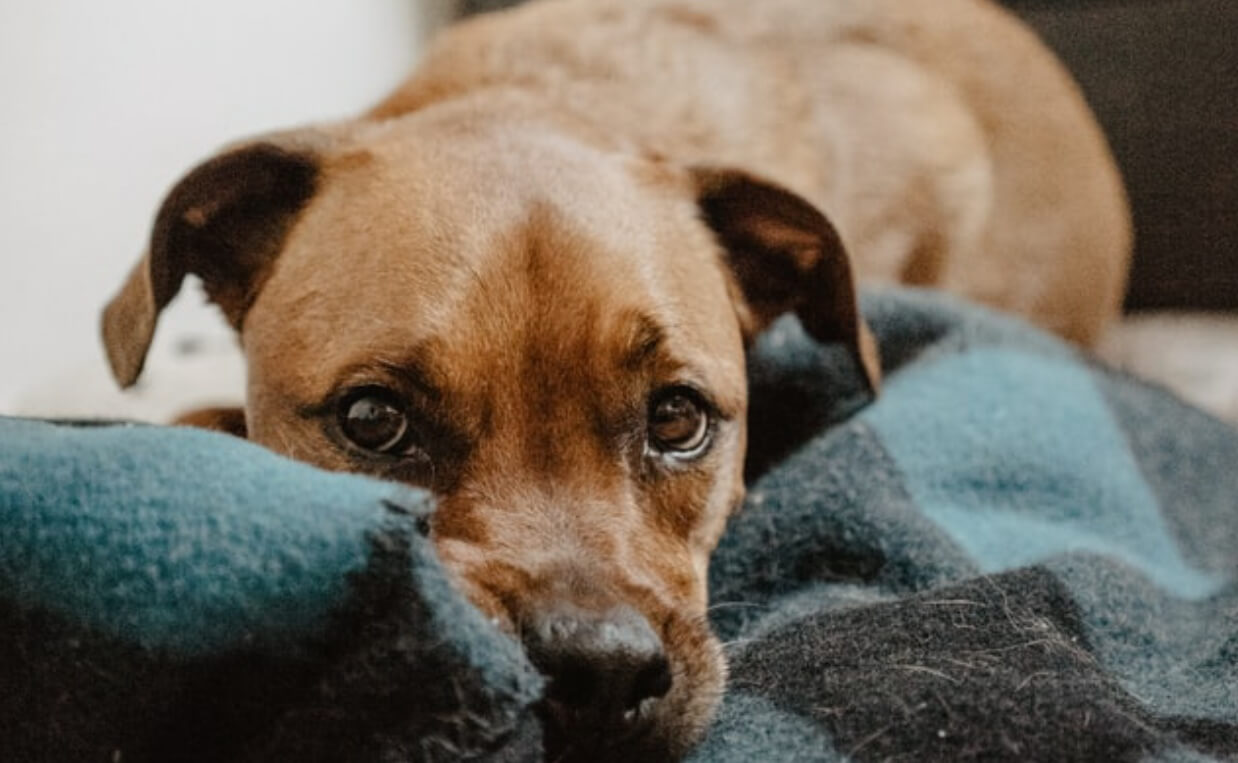
-
Entropion
Some dogs develop a condition called entropion where the eyelid rolls inward. This causes the dog’s hair to rub on the surface of the eye. Entropion causes pain, increased tear production and eventually damage to the cornea. Entropion can be a congenital defect or can develop as a result of chronic squinting due to discomfort or eyelid scarring. A dog diagnosed with entropion will need temporary or permanent surgical correction by a veterinarian.
-
Progressive Retinal Atrophy
Progressive retinal atrophy (PRA) is a group of degenerative diseases that affect the photoreceptor cells of the retina. With this disease, the cells deteriorate over time, eventually leading to blindness in the affected dog.
PRA is not painful so it is rarely noticed during the early stages. The first sign a dog has PRA is night blindness. The dog will become nervous at night, reluctant to go into a dark room or bump into things when the light is dim.
As PRA progresses, an affected dog’s vision will gradually worsen until he or she becomes completely blind. To date, there is no effective treatment for PRA. However, vision loss in dogs is not as significant as it would be in a human. Dogs rely on other senses, such as smell, and are able to function well in their home environment.
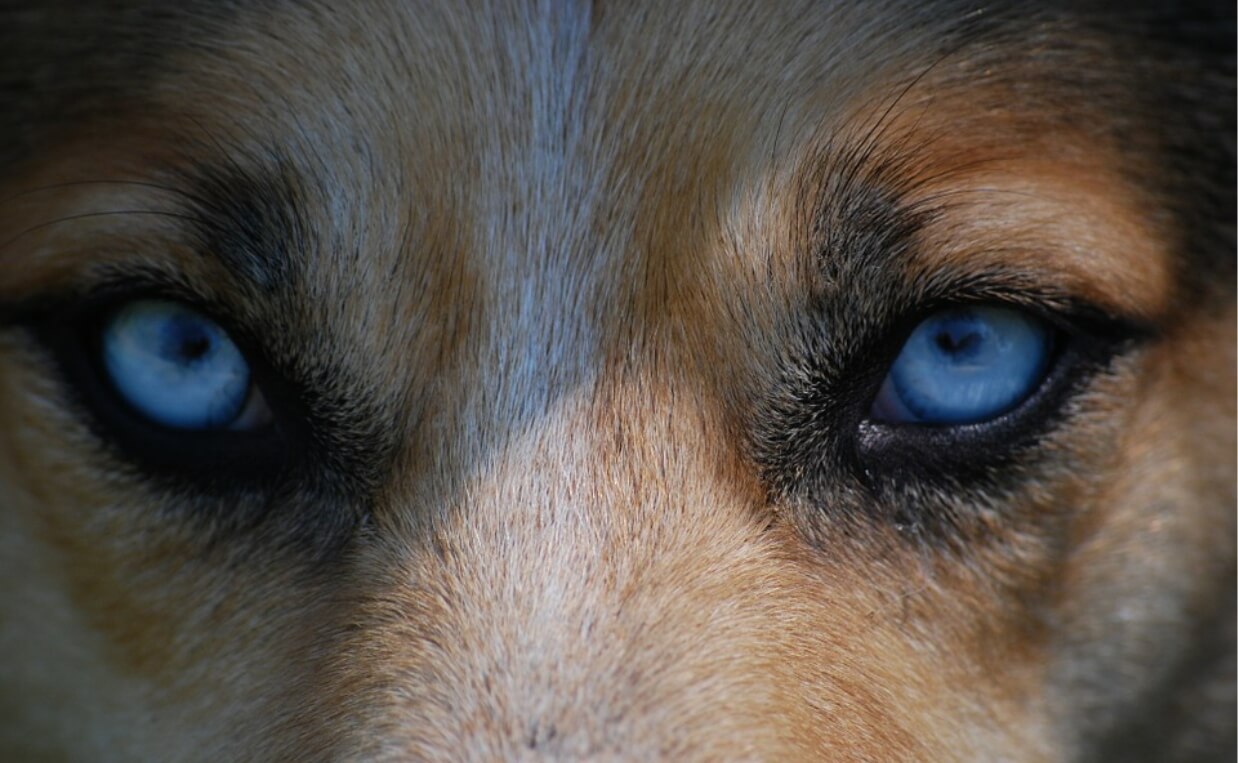
There are many more eye issues in dogs that can be discussed here. Since eye problems have a tendency to worsen quickly, it’s very important to discuss any concerns you might have about your dog’s eyes with your veterinarian as quickly as possible.
Have you had a dog with an eye issue? Please share your experience in the comments below…

 How to Choose the Best Veterinarian for Your Dog
How to Choose the Best Veterinarian for Your Dog Is RoundUp Weed Killer Safe for Dogs?
Is RoundUp Weed Killer Safe for Dogs? What Everyone Should Know About Puppy Mills
What Everyone Should Know About Puppy Mills A Guide to Laser Therapy for Dogs
A Guide to Laser Therapy for Dogs Top 10 Reasons Your Dog May Be Sick and What to Do About It
Top 10 Reasons Your Dog May Be Sick and What to Do About It






Leave a Reply